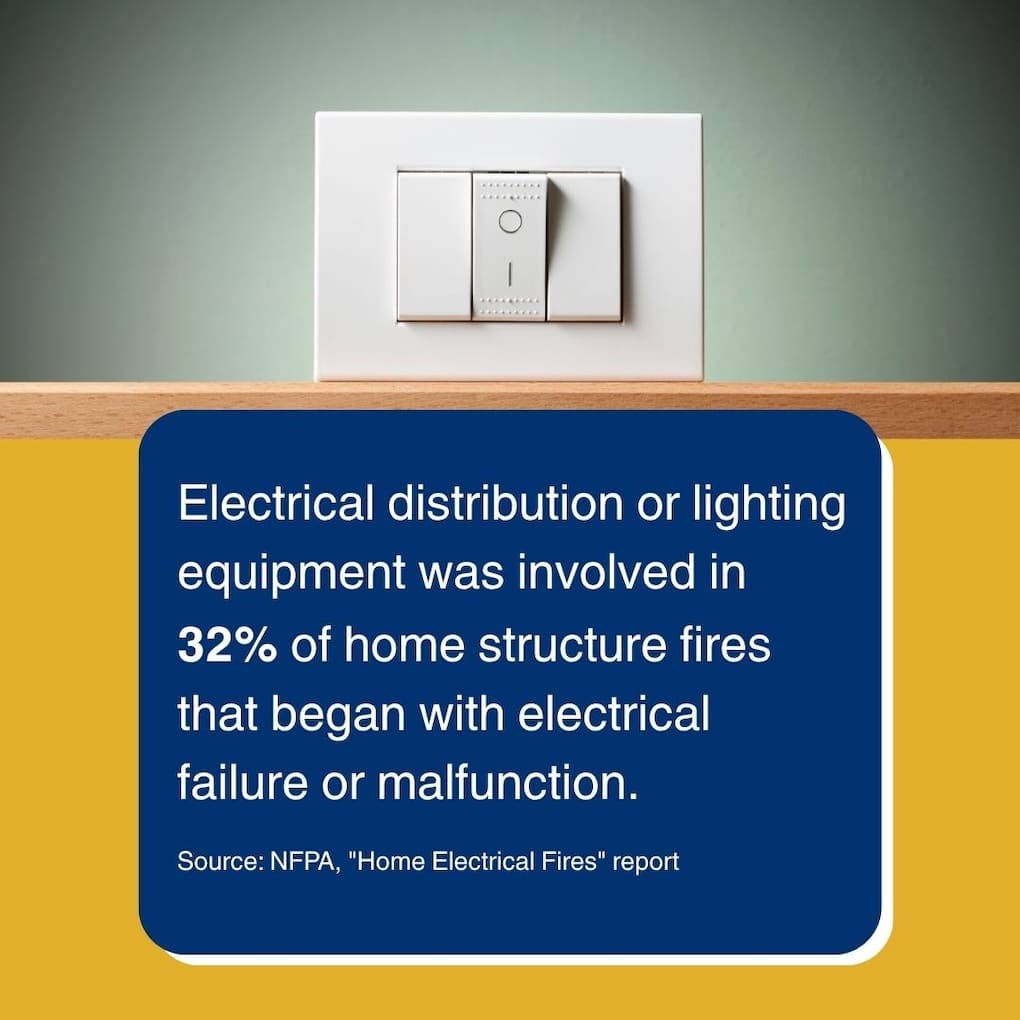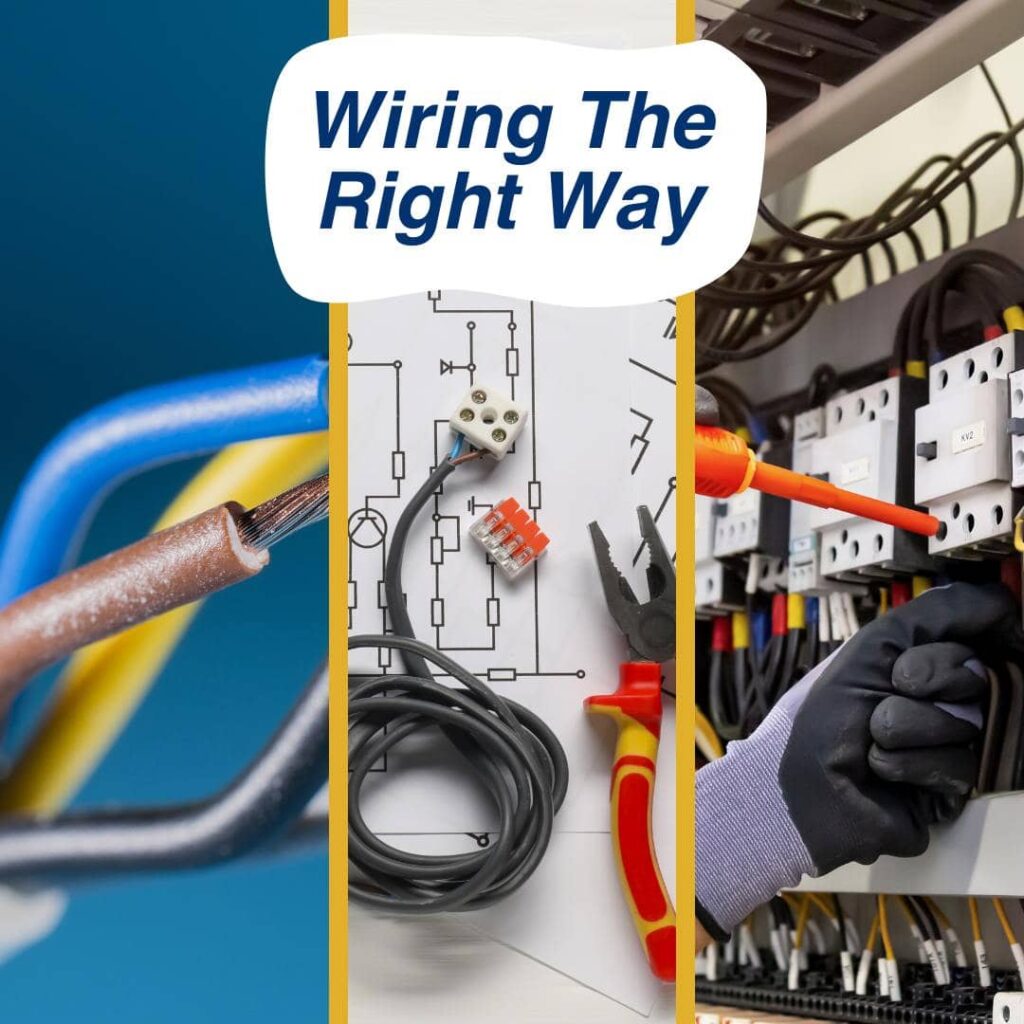Is that finicky light switch finally getting on your nerves, or maybe you’re just ready to give a room a small but satisfying upgrade? Learning how to hook up a light switch is a great skill for any homeowner. It might seem like a small job, but when we’re talking about electricity, doing it safely is super important.
This guide is here so we can walk through each step carefully together. We’ll cover how to replace light switch components and understand basic wiring of a light switch so we can all tackle this project with confidence.
Safety First! Why This is a Big Deal for Us
When we deal with our home’s electrical system, safety is the most important thing to keep in mind, as even a small mistake can have big consequences. Working with electricity can be tricky. It’s not something we should rush or take lightly.
The main dangers are electrical shock, which can be very serious, and causing a fire if we don’t connect wires correctly.
The number one rule for any safe electrical work is: We always turn off the power at the source before we start.
I’ve seen how important this is, and we can’t say this enough! Circuit breakers and fuses protect the wiring in our homes, not necessarily us from direct contact, so cutting the power is our first line of defense.

Tools and Materials We’ll Need for Our Light Switch Project
Before we dive in, let’s make sure we have everything handy for a smooth and successful job. Here’s what we’ll likely need when figuring out how to hook up a light switch:
- New Light Switch: Ensure it’s the correct type (this guide focuses on standard single-pole switches).
- Screwdrivers: Phillips head and a flat-head (e.g., #2 Phillips, medium flat-head).
- Wire Strippers/Cutters: A combination tool is ideal.
- Non-Contact Voltage Tester: Essential for safety.
- Wire Nuts: If existing ones are old/cracked, or for new connections (match size to wires).
- Electrical Tape: For extra security on wire nuts or marking wires.
- Flashlight/Headlamp: For visibility in dark electrical boxes.
- Safety Glasses: To protect your eyes.
Let’s Learn How to Hook Up a Light Switch
Now for the exciting part: let’s break down exactly how to get that new switch installed safely and correctly. Let’s follow these steps carefully.
The Most Important Step for Your Switch Installation
This first action is critical for our safety before we touch any wires.
- Locate Circuit Breaker Panel: Usually in a basement, garage, or utility closet.
- Turn Off Correct Breaker: Check labels. If unlabeled, turn the light on, then flip the breakers one by one until the light goes off. Label the breaker for future reference.
- Test for Power (Never Skip!):
- Confirm your non-contact voltage tester works on a known live outlet.
- Remove the switch plate from the switch you’re working on.
- Carefully place the tester tip near the terminal screws on the side of the switch and near each wire.
- If the tester lights up or beeps, power is still on! Return to the panel; you have the wrong breaker or another issue. Do not proceed until the tester shows NO power.
- Once the switch is exposed, test all wires in the box again. Double-check!
Let’s Remove the Old Switch
With the power confirmed off, we can now safely take out the old switch. Once we are 100% sure the power is off:
- Unscrew and remove the switch plate, keeping the small screws safe.
- Unscrew the mounting screws holding the old switch in the electrical box.
- Gently pull the switch out. Be careful not to tug wires too hard.
- Crucial Tip: Take a photo of the current wire connections with your phone before disconnecting anything. This is your best reference. Note where each colored wire connects.
- Carefully unscrew the terminal screws on the old switch to release wires. For back-stabbed wires (pushed into holes), you might need a tiny screwdriver in a release slot, or cut them close to the switch and re-strip.
Understanding the Wires for Your Light Switch Project
Knowing what each wire does is key to connecting the new switch correctly. In most homes, we’ll see a few common wire colors. Let’s talk for a moment about what these different colors usually mean when we’re wiring a light switch:
- Black (or sometimes Red) Wires: Usually “hot,” carrying electricity from the source to the switch and then to the light. You’ll likely have two connected to a simple on/off switch.
- White Wires: Usually “neutral,” completing the circuit back to the source. In a switch box, neutrals often connect with a wire nut and don’t attach directly to a simple switch. However, a white wire can sometimes be used as a hot wire (it should be marked with black tape, but often isn’t). Your photo is vital here!
- Green or Bare Copper Wires: Ground wires – a vital safety feature, providing a path for fault current to the earth.
Preparing Wires and Making Connections
Proper wire preparation is essential for secure and safe connections when we learn how to hook up a light switch. This involves identifying each wire and attaching it firmly to the correct terminal on the new switch.
- Prepare Wires: If you cut wires, strip about 3/4 inch of insulation using wire strippers.
- Connect Ground Wire First (Safety!): Connect the green or bare copper wire(s) in the box to the green screw on your new switch. If multiple ground wires exist, they might be wire-nutted together, possibly with a “pigtail” to the switch.
- Connect Hot Wires: You’ll likely have two black wires (or one black and one red, or a re-identified white wire from your photo) that were on the old switch. These connect to the brass-colored screws on the new switch. For a single-pole switch, it usually doesn’t matter which hot wire goes to which brass screw.
- Attaching to Screw Terminals: Bend the bare wire end into a hook. Loop it clockwise around the screw (so it tightens as you turn the screw). Tighten firmly.
- Stranded Wires: Twist stranded wires tightly clockwise before looping.
- Double-Check Connections: Gently tug each wire to ensure it’s secure. Loose connections are hazards.
- Neutral Wires: If white (neutral) wires were only connected in the box (not the old switch), leave them that way. Standard single-pole switches usually don’t need a direct neutral connection (some smart switches/dimmers do, which is more advanced).

Let’s Power Up and Test Our Work
This is the moment of truth: time to see our good work in action!
- Go to the circuit breaker panel and turn the breaker back on. (Stand to the side as a precaution.)
- Test your newly installed switch
Troubleshooting Quick Tips for Your Light Switch
Even with the best planning, we might hit a snag, so here are a few common fixes for when things don’t go quite right with your attempt at how to hook up a light switch. Sometimes things don’t go as planned. Here are a couple of quick tips we can use:
- Light doesn’t work?
- First, let’s make sure the light bulb isn’t burned out! It’s an easy thing to overlook.
- Turn the power OFF at the breaker again before doing any more checks.
- Check that the breaker is fully on (sometimes they look on but have tripped; flip it completely off, then on again).
- Carefully re-check all our wire connections at the switch. Are they tight? Are the right wires on the right screws? (Refer to our photo!) A loose wire is a common culprit.
- Sparks, funny smells, or buzzing from the switch?
- Turn the power off immediately at the circuit breaker! Do not try to use the switch. This means there’s a serious problem, like a loose wire creating an arc, a short circuit, or an overloaded circuit. This is a time when we need to call a qualified electrician without delay.
When We Should Call a Pro for Electrical Work
Doing things ourselves is great, but it’s also smart to know when a task is best left to an expert to ensure safety and proper function. While this guide helps with a basic DIY light switch project, there are times when calling a professional electrician is the smartest and safest choice for us:
- If you’re ever unsure or uncomfortable with any step.
- If you see damage: melted plastic, scorched areas, or very crowded/tangled wires.
- If you find aluminum wiring.
- If installing a dimmer, 3-way switch, or smart switch and the wiring is more complex.
- If you followed all steps and it still doesn’t work, or you see warning signs.
Our safety and our home’s safety are always worth the cost of a professional. Let’s not take chances with safe electrical work.
Conclusion
Taking care of these small projects makes a big difference in how we enjoy and maintain our homes. Keeping our home safe and sound involves more than just careful electrical fixes. Hidden issues like moisture can lead to mold, which can affect our home’s structure and our family’s health if we leave it unchecked. While we’re sprucing up our living space and ensuring everything is in good working order, if we’ve noticed any persistent musty smells, signs of water damage (like stains on ceilings or walls), or unexplained condensation on windows or pipes, it might be wise for us to consider what else could be going on. These can be subtle signs of bigger moisture problems.
If you’re planning a renovation, preparing to sell your home, or simply want the assurance that your entire electrical system is safe, efficient, and up to code, now’s the time to act. Contact us today to schedule your professional home inspection.


1 Comment
Comments are closed.